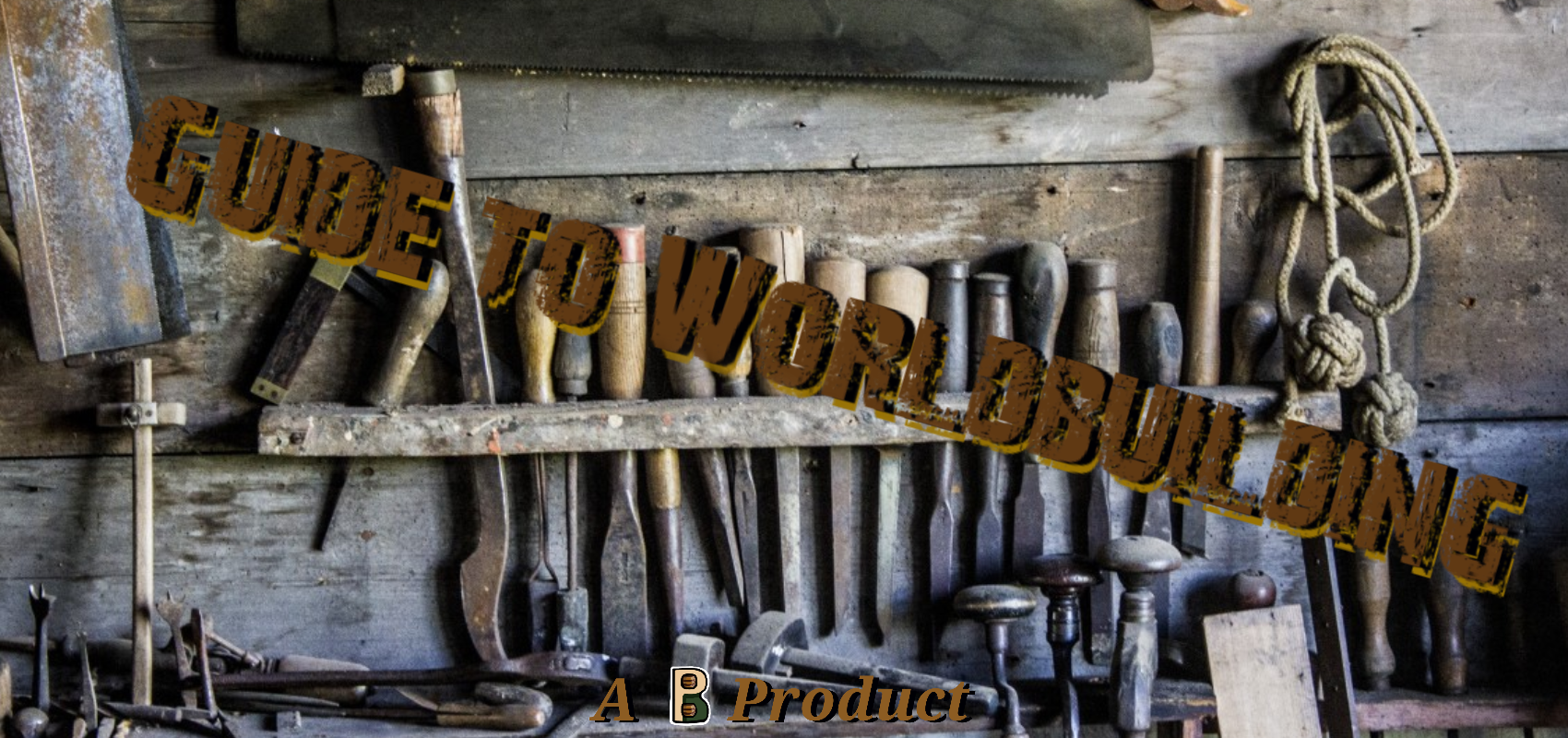Setting Yourself Up
The house smelled musty and damp, and a little sweet, as if it were haunted by the ghosts of long-dead cookies.
Immersion: The New and Familiar
Ok, only Pun in my articles. I swear.
When World-Building, many Builders tend to focus on the minutia of their setting before diving into the real fun of making characters for their world. We will go over these types of worlds, where the Setting is its own character (a Shakesperean Concept) in a future article, but this week we will build more of a loose setting that we can build more onto later. Last week, we created a concept, and this week, we set the foundation for the where and how of our worlds.
Throughout our existence, humanity has placed its stories in local, but unexplored places, e.g., the Neighboring Forest, the Next Kingdom Over, the Old Mason in the run-down part of town, New York...
Other times, we have told familiar tales of the places we all know of, our Streets and Alleys, the local Park, School. Both have a place.
Telling a story in a place that is known, or whose generalities are common enough that simple descriptors such as the school cafeteria or the boys locker room, will work well for concepts like Growing Up, Learning to Trust, etc. They work great for Genres like Sci-Fi, Young Adult(YA) Fiction, Horror, and Surreal. Stories set in Well-known, but not fully understood places, such as Inner-City New York, or the sewers of the Vatican City, also work well for these same genres, but in a different way. Horror changes from fear of the new or fear of familiarity becoming unfamiliar, to fear of the unknown, fear of threats unseen. Knowing your Genres place in your setting is as important as knowing your Settings place in your Genre.
For the purpose of learning, I suggest keeping your setting relatively small; you can use a city, a single office building, or the deck of a ship. For those looking for a refresher, try a whole country or small planet.
When World-Building, many Builders tend to focus on the minutia of their setting before diving into the real fun of making characters for their world. We will go over these types of worlds, where the Setting is its own character (a Shakesperean Concept) in a future article, but this week we will build more of a loose setting that we can build more onto later. Last week, we created a concept, and this week, we set the foundation for the where and how of our worlds.
Throughout our existence, humanity has placed its stories in local, but unexplored places, e.g., the Neighboring Forest, the Next Kingdom Over, the Old Mason in the run-down part of town, New York...
Other times, we have told familiar tales of the places we all know of, our Streets and Alleys, the local Park, School. Both have a place.
Telling a story in a place that is known, or whose generalities are common enough that simple descriptors such as the school cafeteria or the boys locker room, will work well for concepts like Growing Up, Learning to Trust, etc. They work great for Genres like Sci-Fi, Young Adult(YA) Fiction, Horror, and Surreal. Stories set in Well-known, but not fully understood places, such as Inner-City New York, or the sewers of the Vatican City, also work well for these same genres, but in a different way. Horror changes from fear of the new or fear of familiarity becoming unfamiliar, to fear of the unknown, fear of threats unseen. Knowing your Genres place in your setting is as important as knowing your Settings place in your Genre.
For the purpose of learning, I suggest keeping your setting relatively small; you can use a city, a single office building, or the deck of a ship. For those looking for a refresher, try a whole country or small planet.
PatheticBarrel's Choices
Last week, I chose my Thematic Elements, Determination, Technological Change, and Family. Astute readers assumed I would be creating a Sci-Fi Western, in a vein to Firefly, and that's pretty close. What I decided on was a vast planet ruled by Corporations, Aertoin. By creating areas of segregation in my world, along with classic elements of futuristic Big Brother entities, I've easily designed in a variety of possible story scenarios. By pre-naming several of these organizations, the world becomes fleshed out with farmland, technology companies, and an entertainment mogul that might just be an expy...
Always steal from real life.
Next Next week, I'll begin looking at each of these major world players, and what their existence means for my possible protagonists.
Always steal from real life.
Next Next week, I'll begin looking at each of these major world players, and what their existence means for my possible protagonists.
Previous Article: Understanding Your Reference
Next Article: Selecting Your World Players
Coopers' Tool Box
Question of the Week
This weeks question is from ImortalMage1."How do you go about designing a Culture?"The easiest way to create a fictional culture is understanding the ideas you want that culture to bring to mind. Begin with the simple titles, such as Warrior Clan, Proud Nomads, Legalistic Priesthood. From there, you can begin to look at the wider details, such as family structure, gender roles, and resource acquisition. The difficult part is building languages, naming conventions, and histories for a new culture, but it can be best to go with whatever sounds good, without contradicting your Cultures Norms.





Comments